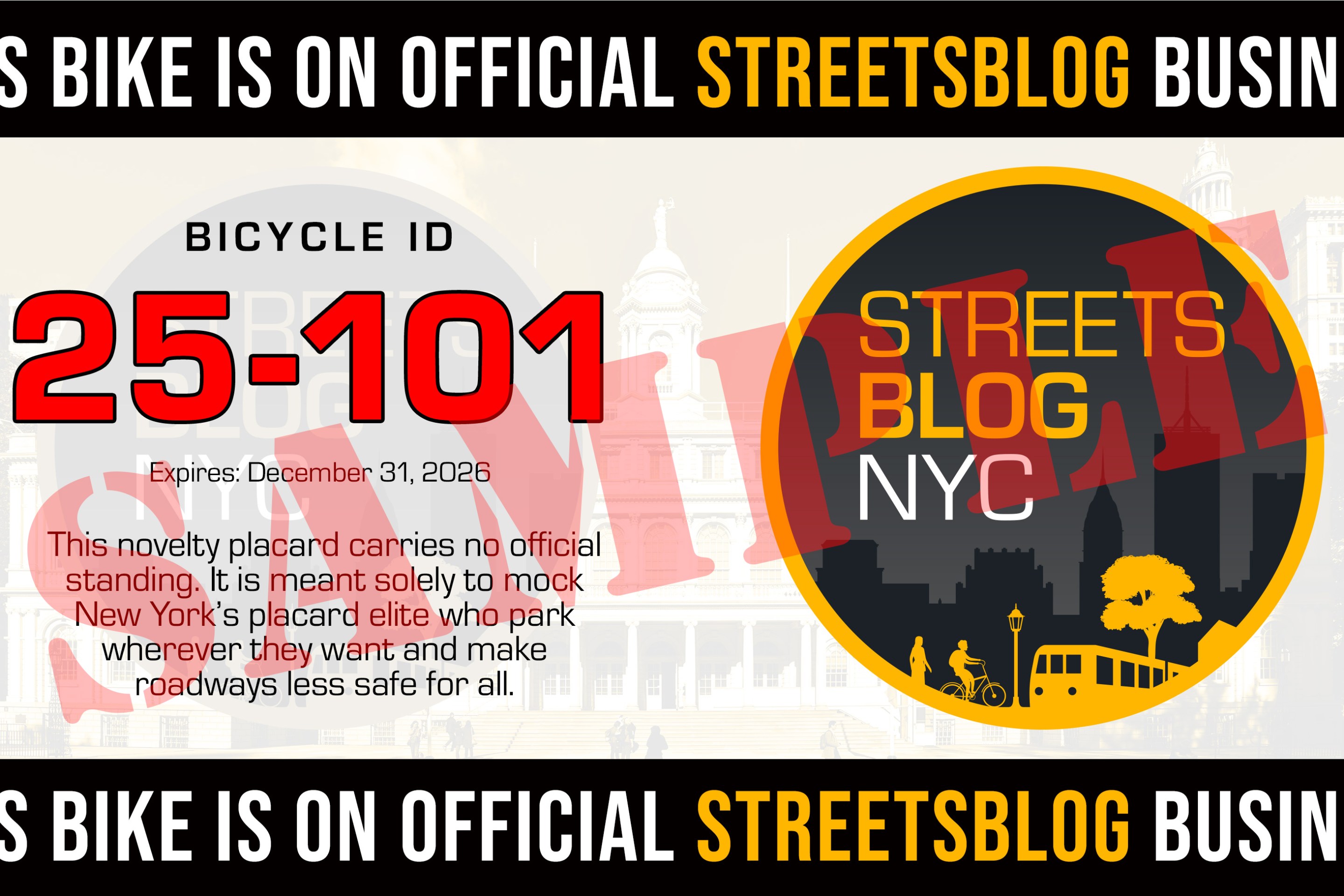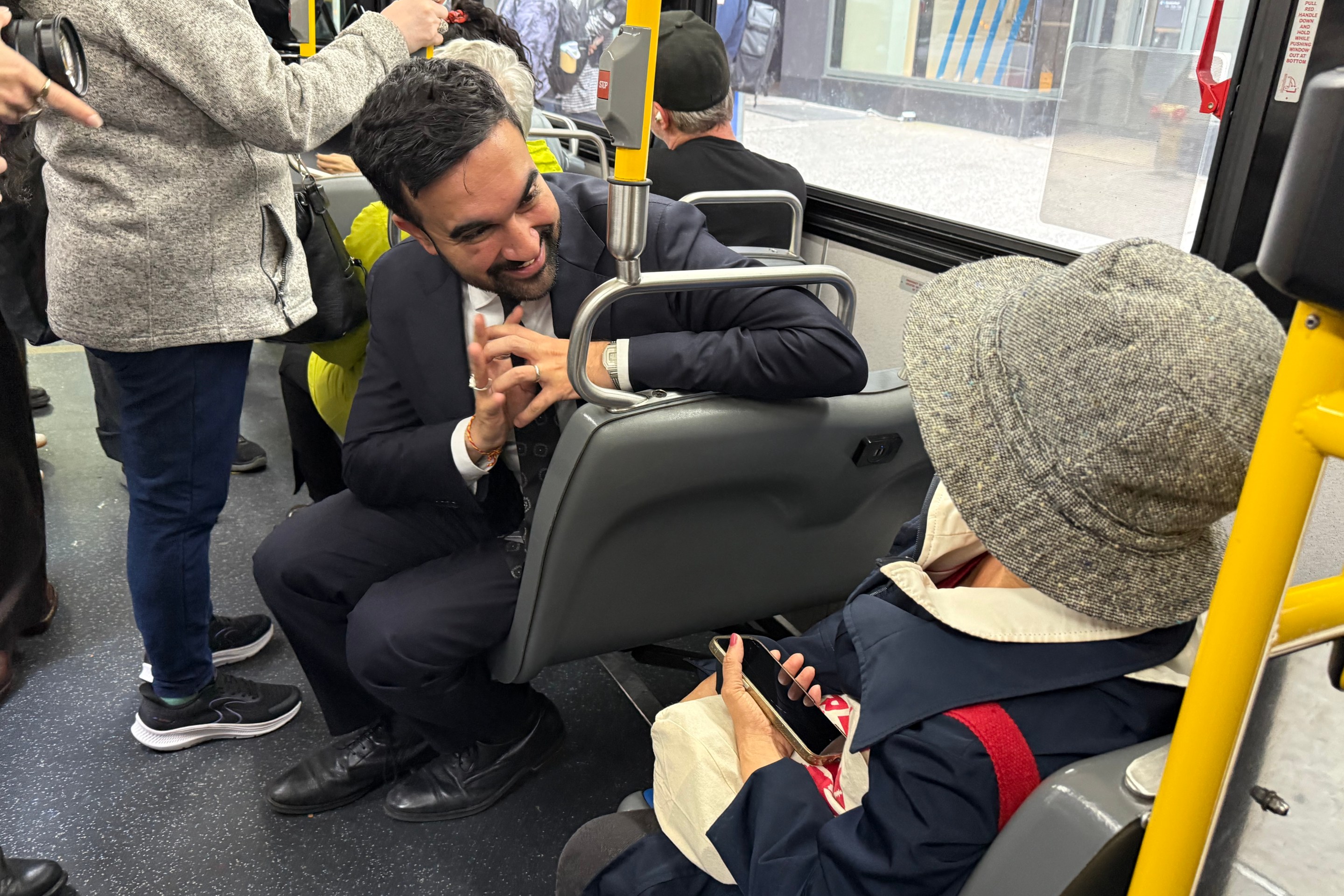The other day, the NYC Department of Transportation unveiled a proposal to build a new pedestrian-only plaza with tables, benches, greenery and bike racks in Downtown Brooklyn along two blocks where Willoughby and Adams Streets intersect. According to a New York 1 report, the bottom two floors of the city-owned building at 345 Adams will also be opened up for retail use. The Metrotech Business Improvement District will be responsible for managing the new public space. Here's an overhead plan sketch:

And here is a before-and-after rendering:

You can find some more great photos of the space here at Starts & Fits. DOT's plan is a welcome change in attitude if not policy. While cities around the world have been making serious, concerted efforts over the last ten years to reallocate street space from motor vehicles to human beings, New York City's DOT has operated under policies that tend to bring more traffic to city streets. Though this one little pedestrian mall is not, by itself, going to have a huge impact on Downtown Brooklyn traffic, it does represent a radical departure from DOT business-as-usual. Hopefully, it signals the beginning of an important change in the way New York City manages its streets. It is not an exaggeration to say that public space projects like this are exactly what New York City needs to do if it wants to continue to grow and be a great and vibrant city in the 21st century.
Community advoctes have been pushing changes like this for years through the Downtown Brooklyn Traffic Calming Project and various other inititatives, usually to no avail. Why the DOT is suddenly interested in developing something like this is a little bit of a mystery. It would be nice if we could say that the Willoughby-Adams project is part of an overall city policy. But New York City still has no clearly-stated transportation policy. Unlike London, where the city has methodically set out to create one hundred new public spaces in the next few years using money raised from congestion charging, this Willoughby-Adams project seems to have been dropped down on Brooklyn randomly at the whim of some faceless deputy commissioner. The project is part of no clearly stated long-term strategy or intiative. It just sort of appeared.
Sources tell me that the rapid development of this ped mall is directly related to Deputy Mayor Dan Doctoroff's recent take-over and re-shuffling of DOT. And that DOT is now scrambling to fast-track a batch of public space and pedestrian projects at the request of Doctoroff. Unfortunately, it is way too difficult for members of the public to understand what drives these decisions and how they are made. It's the primary reason why many community people are skeptical of anything that DOT and other city agencies do these days, even good projects like this one.
But let's not look a gift horse in the mouth. This pedestrian zone is an encouraging development and a somewhat radical break from city policies that have helped to make much of Downtown Brooklyn a traffic-choked nightmare. Willoughby-Adams is likely to be a good spot for a ped mall. Only 130 cars per hour travel through this little two block stretch at peak compared to 2,600 pedestrians. As the picture below shows, at any given moment during the work day, the area is absolutely packed with peds:

Likewise, Willoughby-Adams is not a particularly useful or important road for motor vehicles. In fact, the main purpose of this little stretch of streetscape today is as a free parking lot for police officers' personal vehicles. These government employees seem to view Downtown Brooklyn as their free, private parking lot.

Not surprisingly, the cops don't give themselves summonses for this illegal parking. Even when they are blatantly parked in crosswalks:

Or when they are parked on top of the bike lane leading to the Brooklyn Bridge:

Or when their parking placard expired months ago. This cop's permit expired in 2005:

This member of New York City's Finest doesn't even have a permit. Apparently, a police deparment notebook and a "NarcoPouch" on the dashboard are all the credentials you need for free, all-day parking in Downtown Brooklyn:

People who want to see this pedestrian plaza come to fruition this spring will have a chance to speak up in favor of it when Community Board 2's Transportation Committee meets on Tuesday, March 21 at 6:30pm, Founders Hall, St. Francis College, 180 Remsen Street between Clinton and Court Streets. If you care about this sort of thing, I urge you to show up, especially if you live within the boundaries of CB2. The pedestrian plaza is not a done deal. As with any change in New York City -- particularly changes that reduce parking and travel space for motor vehicles -- there is certain to be opposition to DOT's plan and fear that removing any small amount of roadspace used by motor vehicles is going to create a traffic catastrophe on surrounding streets.
Aside from the police who enjoy their free parking and community people who have grown to be suspicious of any DOT plan for Downtown Brooklyn, some number of parents who drop off their kids by car at the Brooklyn Friends School are also likely to be unhappy with the reallocation of this street to pedestrians. The closure of the street to cars will make their drive out of the area a few minutes longer and less convenient. You may scoff at that argument, but this is exactly the kind of opposition that kills great plans at Community Board meetings. Speakers will likely have two or three minutes to say their piece. Obviously, you can say whatever you want. But if you need some ideas, here are a few talking points that you might want to hit:
1. This plan isn't going to make traffic congestion in Downtown Brooklyn worse. There just aren't enough cars using this two-block stretch to have any real impact on the surrounding street network. Likewise, cities around the world are finding that when you reduce road capacity to motor vehicles and give that street space to pedestrians, cyclists and buses, in fact, you make traffic congestion disappear. It may seem counter-intuitive, but the single best way to reduce traffic congestion, especially in a place with great mass transit like Downtown Brooklyn, is to take away street space from motor vehicles.
2. Downtown Brooklyn needs more and better places for people to sit outside, eat lunch, walk around and people-watch, especially with all of the new development in the area. Even Fulton Mall lacks places to sit and hang out. For years, a variety of advocates -- many of whom are members of CB2 -- have been encouraging DOT to improve traffic flow, public space and parking enforcement in Downtown Brooklyn. Well, now DOT is doing it. By approving this ped mall we encourage and stregthen the progressive forces within DOT that are pushing for the kinds of changes that the community has been requesting for years.
3. Perhaps, most important: There is no real downside to this plan. If the pedestrian plaza doesn't work out for some reason, all DOT has to do is pick up the tables, benches and planters and return the street to the illegal police parking lot that it is today. No concrete is being poured. No streets are being de-mapped. This is exactly the kind of experimentation that we want to encourage DOT to do. This experiment offers very little risk and great potential rewards for workers, residents and visitors of Downtown Brooklyn. A final note: Standing in the middle of Willoughby Street, looking east, you get a great view of the Prison Ship Martyr's Monument in Fort Greene Park. You can be certain that, today, no one notices the monument in their rear view mirror as they weave through the throngs of pedestrians and illegally parked cops. But if people had a spot to sit and hang out, and if the pedestrian plaza was someday extended two blocks further down Willoughby to Jay Street, the monument would be noticed. It would become an integral part of this public space.

I have walked through this area dozens of times and until the other day when I stood in the middle of Willoughby Street and just took a moment to look around, I had no idea the Fort Greene monument was even visible from this part of Downtown Brooklyn. The view of the monument reminded me how much a street changes when you remove the traffic and give people the chance to sit and just be for a moment. We've come to assume that streets are places to store vehicles or drive through on the way to somewhere else. But when we take the cars and trucks away, a street becomes an actual place, a destination, a spot where people can get together. Public spaces like this are where community happens in a big city.





